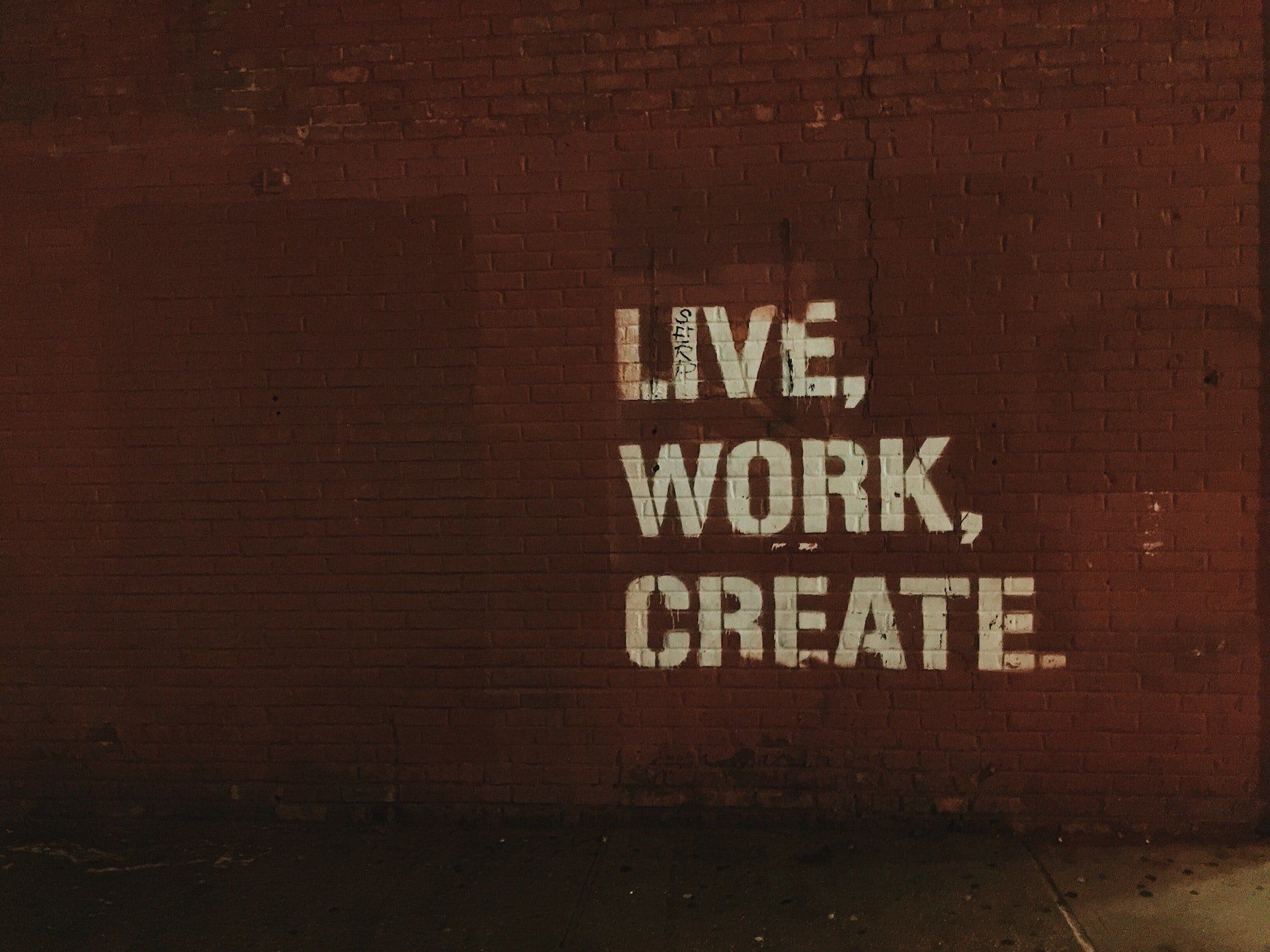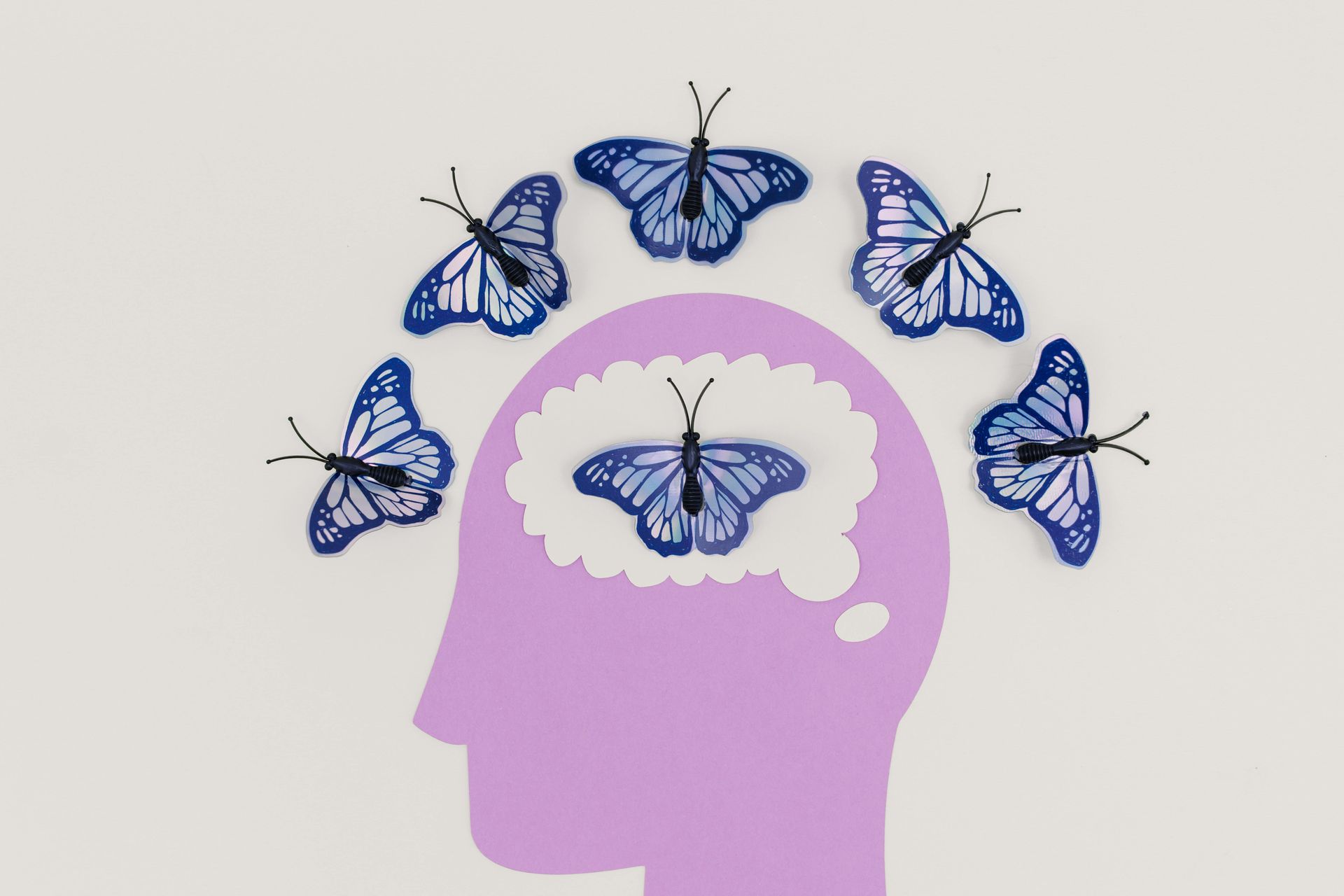The McKinsey 7S Framework: A Guide to Effective Organizational Change
The McKinsey 7S Framework stands as one of business's most enduring strategic models, yet most organizations apply it with all the creativity of a government clerk processing mundane paperwork.
This comprehensive guide strips away corporate jargon to deliver what actually works about this 45-year-old framework, why it matters now more than ever, and how to leverage it for genuine transformation rather than performative change theatre.
Unlike most strategic models gathering dust in consultants' PowerPoints, the 7S Framework continues to offer remarkable clarity in an increasingly chaotic business landscape—if you know how to use it properly.
Introduction to the McKinsey 7 S Model
History of the Model
The McKinsey 7 S Model emerged in the 1970s when business consultants Robert Waterman and Tom Peters challenged the myopic obsession with organizational structure as the primary driver of effectiveness. Their groundbreaking work, later published in "In Search of Excellence," mapped the interdependence of seven critical factors that collectively determine an organization's ability to adapt and change. While previous frameworks fixated on org charts and reporting lines, the 7S Model recognized that sustainable transformation requires alignment across multiple dimensions simultaneously.
What is the McKinsey 7 S Model?
The McKinsey 7 S Model is a strategic framework for organizational alignment and success, analyzing seven key elements: structure, strategy, systems, skills, staff, style, and shared values. Structure, strategy, and systems are classified as the 'Hard Ss' whereas 'skills', 'staff', 'style', and 'shared values' are classified as the 'Soft Ss' in the McKinsey 7 S Model.
The model is a widely used tool for managing complexity and driving consistent alignment in businesses, focusing on the seven internal elements that influence an organization’s ability to change.
Today's business landscape makes this insight more relevant than ever. Companies continue to burn millions on failed transformations because they treat change as a series of isolated initiatives rather than an integrated system. The model's genius lies in its simplicity: seven interconnected elements that must work in harmony for an organization to function effectively. When deployed correctly, it provides a diagnostic framework for identifying alignment gaps and a roadmap for addressing them.
Pro Tip: If you don't have an Enterprise PMO function, you are likely tackling transformation as isolated initiatives and driving change fatigue in your organization.
What differentiates the McKinsey 7 S Model?
What elevates the McKinsey 7 S Model beyond consultant-speak is its recognition that organizational dynamics don't exist in silos. This revelation should be obvious, but somehow continues to elude many transformation efforts. The framework argues that changes to any single element will inevitably impact all others, creating a domino effect that must be anticipated and managed. This interconnectedness explains why so many change initiatives fail: they focus exclusively on structural changes without addressing the corresponding shifts needed in values, skills, systems, and other dimensions.
Key Elements of the Model
The McKinsey 7 S Model identifies seven interdependent elements categorized into “hard” and “soft” components—a distinction that acknowledges both the tangible and intangible aspects of organizational life.
The Hard Elemements of the 7S Model
The hard elements—Strategy, Structure, and Systems—represent the mechanical aspects of organizational design that leaders can directly manipulate. These provide the visible scaffolding upon which companies build their operations.
- Strategy defines the organization’s master plan for achieving sustainable competitive advantage, translating mission and values into actionable business objectives.
- Structure details how the company organizes itself, establishing the formal relationships and reporting lines that appear on organizational charts. The organization's hierarchy and workflow must support employees in their new roles and remove obstacles to applying new skills. Reinforcement ensures that changes are maintained.
- Systems encompass the business and technical infrastructure that enables workflows and decision-making processes, from IT networks to recruitment procedures and performance management frameworks.
The Soft Elemements of the 7S Model
The soft elements—Shared Values, Skills, Style, and Staff—comprise the cultural and human dimensions that breathe life into the organizational structure. These elements prove more challenging to measure and influence directly, yet they often determine whether change initiatives succeed or fail.
- Shared Values sit at the center of the framework, reflecting the core beliefs that guide the organization’s identity and priorities.
- Skills represent the collective capabilities and competencies that enable employees to execute strategy effectively. Introducing new skills within organizations is crucial for adapting to growth and change.
- Style captures the leadership approach and cultural norms that shape behaviour throughout the organization.
- Staff encompasses all human resource considerations, from recruitment and talent development to compensation strategies.
The Interplay of the Elements of the 7S Model
The genius of the model lies in recognizing that these elements don’t merely coexist—they actively shape and influence each other in complex ways. Understanding how different parts of an organization work together is essential for effective strategy implementation. A shift in strategy necessitates corresponding adjustments in structure, systems, skills, and other dimensions. These elements are mutually reinforcing, and failure to recognize and manage these interdependencies is a key reason why approximately 70% of transformation initiatives ultimately fail.
Understanding the 7S Model
The McKinsey 7S Model operates like an organizational MRI, providing a diagnostic view of how different internal factors interact to create either alignment or dysfunction. While most change initiatives focus on visible symptoms, the 7S Model helps organizations identify root causes by examining how misalignments between elements undermine performance. This deeper understanding allows leaders to address underlying issues rather than merely treating surface-level manifestations.
The model is based on the idea that all elements must be effectively aligned to achieve optimal organizational design and a competitive edge. It is a popular change management model that helps organizations identify gaps and develop strategies to address them.
The model’s true power emerges when it is used as both a diagnostic tool and an implementation framework. By systematically evaluating each element and its relationship to others, organizations can pinpoint specific areas of misalignment and develop targeted interventions to address them. For example, a company struggling with innovation might discover that while its strategy emphasizes creative thinking, its systems rely on rigid approval processes that stifle experimentation. This insight enables leaders to realign systems with strategic objectives, thereby removing barriers to achieving desired outcomes.
What distinguishes the 7S Model from other frameworks is its emphasis on interdependence. Unlike linear approaches that treat change as a sequential process, the 7S Model recognizes that organizational elements exist in a state of dynamic equilibrium. Altering one element inevitably affects others, creating ripple effects throughout the system. This recognition helps explain why so many change initiatives fail, despite well-formulated strategies—they often neglect to address the corresponding adjustments needed across other dimensions.
The model also challenges the conventional hierarchy of organizational elements. By placing Shared Values at the center of the framework, it elevates culture from a secondary consideration to a primary driver of performance and change capacity. This insight anticipates Peter Drucker’s famous observation that “culture eats strategy for breakfast,” acknowledging that an organization’s values and beliefs ultimately determine how effectively it can implement strategic objectives.
Optimal Organizational Design
Optimal organizational design isn’t about perfection—it’s about alignment. The 7s Framework provides a blueprint for creating organizations where strategy, structure, systems, staff, skills, style, and shared values reinforce one another rather than undermining each other. This alignment doesn’t happen by accident; it requires intentional design and continuous recalibration as internal and external conditions evolve.
The framework’s greatest contribution to a company's organizational design lies in its holistic perspective. Rather than optimizing individual elements in isolation, it emphasizes the interactions between them. A brilliantly crafted strategy fails without the structural mechanisms to implement it. An innovative culture withers without systems that reward creativity. Technical skills become irrelevant if they don’t align with strategic priorities. By examining these intersections, organizations can identify and address points of friction that impede performance.
Identifying unaligned processes within an organization's structure and functionality is crucial. Conducting a thorough analysis to pinpoint inconsistencies and areas requiring change helps ensure that all elements work in harmony.
This perspective proves particularly valuable during periods of significant change. When organizations implement new strategies or respond to market disruptions, the 7S Framework helps ensure that all dimensions evolve in concert. For example, a company pivoting toward digital transformation must consider not only technological systems but also the skills employees need, the structural changes required to support new workflows, and the cultural shifts necessary to embrace digital mindsets.
The most effective applications of the model recognize that optimal design varies by context. Different strategies require different organizational architectures—what works for a manufacturing company pursuing operational excellence differs dramatically from what serves a tech startup focused on disruptive innovation. The 7S Framework doesn’t prescribe a universal template but instead provides a methodology for designing organizations that align with specific strategic objectives and operational realities.
McKinsey 7S Model Application
The application of the McKinsey 7S Model as a change framework transcends theoretical analysis to deliver practical value across multiple scenarios. While many frameworks gather dust after initial implementation, the 7S Model shines brightest during three critical business challenges: executing strategic pivots, navigating mergers and acquisitions, and diagnosing persistent performance issues.
| Scenario | Approach with McKinsey 7S Model |
|---|---|
| Achieving Successful Change | - Integrate both hard and soft elements for comprehensive change. - Align all organizational dimensions with new strategic objectives. - Ensure leadership style, skills, cultural values, and systems evolve together. - Prevent strategy collapse by updating outdated elements. |
| Strategic Transformations | - Use the model as a roadmap for aligning organizational aspects with new goals. - Focus on more than structural changes to include leadership style, skills, and values. - Increase chances of success by evolving all dimensions in harmony. |
| Mergers and Acquisitions | - Identify cultural and operational mismatches early. - Map both organizations using the seven elements to anticipate friction points. - Develop targeted strategies for integration, especially for soft elements like leadership style and shared values. |
| Innovation | - Foster a culture of creativity by aligning Shared Values with innovation goals to encourage risk-taking and experimentation. - Ensure the organization's Structure supports cross-functional collaboration, breaking down silos to enhance idea sharing and development. - Align Systems to streamline processes and reduce barriers, enabling rapid prototyping and iteration. - Develop Skills by investing in training programs that enhance creative problem-solving and adaptability among employees. |
When diagnosing persistent performance issues, the 7S Model helps organizations move beyond superficial explanations to uncover systemic causes. Consider a company struggling with innovation despite substantial investments in R&D. A 7S analysis might reveal that while the strategy emphasizes innovation, compensation systems reward risk avoidance, managerial style discourages experimentation, and organizational structure isolates creative thinkers. This multidimensional view enables leaders to address the root causes rather than just the symptoms.
The model’s application follows a clear methodology: first assessing current alignment across all seven elements, then defining the desired future state for each dimension based on strategic objectives, and finally developing a coordinated change initiative that addresses interdependencies between elements. This systematic approach ensures that changes reinforce rather than undermine one another, substantially increasing the likelihood of successful transformation.
The Hard Elements of the Model
The “hard elements” of Strategy, Structure, and Systems form the visible architecture of organizational design—the elements leaders can directly manipulate through formal decisions and documented processes. These tangible components provide the operational backbone that enables an organization to execute its mission, though focusing exclusively on these dimensions creates the illusion of control while overlooking the human factors that ultimately determine success.
The Strategy Element
The strategy element represents the organization’s master plan for creating sustainable competitive advantage—how it differentiates itself, which markets it prioritizes, and how it allocates resources to achieve objectives. An effective strategy provides clear direction that guides decision-making throughout the organization, answering fundamental questions about purpose and prioritization. Unlike corporate mission statements gathering dust in lobbies, genuine strategy involves making difficult trade-offs about what the organization will and won’t do.
A top-down approach is often effective in implementing the McKinsey 7-S Model, starting with broad strategy and shared values to guide the organization in applying the model in a structured manner.
The Structure Element
Structure establishes the formal organization of the company—how authority is distributed, how work is divided, and how different functions coordinate their activities. This element is represented in organizational charts but extends beyond reporting relationships to encompass team configurations, governance mechanisms, and decision-making rights. The most effective structures align with strategic priorities, enabling rather than impeding the organization’s ability to execute its plans. A company prioritizing innovation requires dramatically different structural arrangements than one focused on operational efficiency.
The Systems Element
Systems encompass the formal and informal processes that govern daily operations—everything from performance management and information technology to financial controls and communication channels. These operational mechanisms translate strategic intent into consistent action, ensuring that individual efforts align with organizational objectives. The systems dimension often reveals the gap between what organizations say they value and what they actually reward, as processes ultimately determine how work gets done, regardless of stated priorities.
While these hard elements provide essential operational clarity, they represent only part of the organizational equation. Companies that focus exclusively on these dimensions fall into the trap of mechanistic thinking, designing elegant organizational machines that fail because they ignore the human dimensions captured in the framework’s soft elements.
The Soft Elements of the Model
The “soft elements” of Shared Values, Skills, Style, and Staff constitute the organization’s human and cultural dimensions—elements more difficult to measure and influence directly but often determinative in whether change initiatives succeed or fail. These dimensions transform the organizational skeleton created by hard elements into a living system capable of adaptation and innovation.
The Shared Values Element
Shared Values occupy the framework’s center, reflecting foundational beliefs that shape organizational identity, priorities, and behaviour. These core values extend beyond wall placards to include both explicit principles and implicit assumptions about what matters. Organizations where stated values contradict operational reality create cynicism that undermines change initiatives. Genuine shared values provide the cultural glue that holds organizations together during turbulent periods and the ethical compass that guides decision-making when formal rules prove insufficient. These values also guide employee behavior and company actions, ensuring alignment with organizational goals. The Shared Values element is central to the McKinsey 7S Model, influencing all other elements and serving as the foundation upon which the other six elements depend for coherence and alignment.
The Skills Element
Skills encompass the collective capabilities and competencies that enable an organization to execute its strategy effectively. This dimension encompasses both technical expertise and adaptive capacities, including creativity, collaboration, and resilience. The skills element highlights the gap between strategic aspirations and organizational capabilities—a company can’t pivot toward digital transformation without developing corresponding digital competencies. Organizations that neglect this dimension find themselves with strategies that they lack the capabilities to implement.
The Style Element
Style captures leadership approaches and cultural norms that shape behaviour throughout the organization. This element determines how decisions are made, how conflicts are resolved, and how people interact on a daily basis. Leadership style establishes behavioural templates that ripple throughout the organization, as employees take cues from how executives operate. An organization cannot foster innovation with leadership practices that punish experimentation, regardless of what the strategy may proclaim. Effective leadership styles also help resolve conflicts by encouraging open communication and participative decision-making.
The Staff Element
Staff encompasses all human resource considerations, from recruitment and development to compensation and retention strategies. This dimension focuses on how the organization attracts, develops, and organizes talent to achieve strategic objectives. The staff element highlights that strategic execution ultimately depends on having the right people with appropriate skills in suitable roles—and creating conditions where they can contribute effectively. Organizational structures should support employees in their roles, facilitating the implementation of new skills and eliminating any obstacles that may hinder their application.
The soft elements often explain why organizations with similar strategies, structures, and systems achieve dramatically different results. Two retailers may employ identical business models, but the one with stronger alignment across these cultural dimensions consistently outperforms its competitor on execution. Organizations that master these soft elements create intangible advantages that competitors struggle to replicate.
Benefits of the Model
The McKinsey 7S Model offers numerous benefits to organizations seeking to improve their effectiveness and achieve their goals. By analyzing the seven elements, organizations can identify gaps and areas for improvement, ultimately leading to better organizational alignment and success. The model’s focus on soft elements, such as shared values and management style, helps organizations to create a strong corporate culture that guides employee behavior and supports the organization’s ability to adapt to change. Additionally, the model’s emphasis on hard elements, such as strategy and structure, enables organizations to implement changes and improve their overall performance effectively. By using the McKinsey 7S Model, organizations can gain a competitive edge and improve their ability to respond to future changes in the external environment.
Implementing the Model
Implementing the McKinsey 7S Model demands more than academic understanding—it requires a structured methodology that transforms theoretical insight into practical action. The implementation process begins with rigorous diagnosis, proceeds through detailed design, and culminates in coordinated execution across all seven dimensions.
Appointing internal change agents is crucial in this process. These agents, whether drawn from impacted teams or brought in as consultants, facilitate training, ensure clear communication, and promote employee involvement throughout the change process.
The Diagnostic Phase starts with a comprehensive assessment of current alignment across all seven elements. This analysis identifies gaps between elements and misalignments with strategic objectives. Effective diagnosis requires honest self-examination, often benefiting from external perspectives that challenge organizational blind spots. The goal isn’t perfection in each dimension but rather coherence across them—ensuring that each element reinforces rather than undermines the others.
| Element | Current State | Desired Sta | Key Gaps | Priority |
|---|---|---|---|---|
| Strategy | Product leadership focus | Market expansion | International capabilities | High |
| Structure | Functional silos | Cross-functional teams | Collaboration mechanisms | Medium |
| Systems | Manual processes | Digital workflows | Technology infrastructure | High |
| Shared Values | Risk avoidance | Calculated risk-taking | Incentives for innovation | High |
| Skills | Technical expertise | Creative problem-solving | Design thinking capabilities | Medium |
| Style | Command-and-control | Collaborative leadership | Decision-making practices | High |
| Staff | Specialist orientation | Versatile generalists | Talent development programs | Medium |
Following diagnosis, the Design Phase establishes the desired future state for each element based on strategic priorities. This phase requires careful attention to interdependencies, ensuring that changes to one element complement rather than contradict adjustments to others. The most effective designs recognize that different strategies require different organizational configurations. An organization pursuing cost leadership needs arrangements that differ substantially from those prioritizing innovation or customer intimacy.
The Execution Phase implements changes across all seven dimensions through coordinated action plans. This stage requires both technical expertise in change management and political skill in navigating organizational resistance. Successful implementation typically follows a cascade approach, beginning with shifts in strategic direction and leadership style before addressing structural arrangements, systems, staffing, and skills development. Throughout the implementation process, ongoing monitoring ensures that changes maintain alignment across all elements.
Organizations that excel at implementing the 7S Model recognize that the process isn’t linear but iterative. As changes to one element reveal unforeseen consequences for others, the model provides a framework for continuous adjustment rather than a one-time transformation. This adaptive approach proves particularly valuable in volatile environments where an organization's ability to constantly recalibrate their alignment is essential to remain effective.
Change Management with the Model
The McKinsey 7S Model offers a powerful framework for change management, addressing both the technical and human dimensions that determine whether transformation efforts succeed or fail. While approximately 70% of organizational change initiatives end in disappointment, those guided by the 7S framework benefit from its comprehensive perspective and emphasis on alignment across multiple dimensions.
The model’s most significant contribution to change management lies in its ability to identify the ripple effects of proposed changes, thereby improving performance. Traditional approaches often focus narrowly on structural adjustments or process improvements without considering their implications for other organizational elements. The 7S Framework insists that leaders anticipate how changes to strategy will affect skills requirements, how structural shifts will impact leadership style, and how new systems will influence shared values. This systemic view helps organizations anticipate resistance and develop comprehensive implementation plans. The seven key interconnected elements influence each other, emphasizing the importance of shared values and culture as central to effective organizational change.
Effective change management using the 7S Model follows a clear sequence. The process begins with articulating a compelling strategic vision that establishes clear direction and purpose. Leadership style then shifts to model desired behaviours and create psychological safety during transition. Structural adjustments and systems changes follow, providing the operational framework for new ways of working. Staff and skills dimensions address the human capabilities needed to execute the new direction. Throughout this sequence, shared values provide continuity and purpose, helping the organization maintain its identity while embracing necessary evolution.
The most successful applications of the model for change management incorporate storytelling techniques that engage both rational understanding and emotional commitment. Where traditional approaches emphasize data and logic, the 7S Framework recognizes that sustainable transformation requires connecting changes to organizational identity and purpose. By anchoring change initiatives in shared values while systematically addressing all organizational dimensions, the model enables organizations to navigate the technical, political, and cultural challenges that often derail most transformation efforts.
Organizations that master change management using the 7S Model develop institutional capabilities for continuous adaptation. Rather than treating transformation as a periodic disruption, they create systems and cultures that enable ongoing alignment across all seven dimensions. This adaptive capacity proves increasingly valuable in volatile environments where organizations must constantly recalibrate to remain effective.
Organizational Alignment with the Model
Organizational alignment is critical to achieving success, and the McKinsey 7S Model provides a framework for aligning the seven key elements of an organization. By analyzing the relationships between these elements, organizations can identify areas where they are misaligned and make adjustments to enhance their overall effectiveness. The model’s focus on shared values and core values helps organizations to create a strong sense of purpose and direction, which is essential for guiding employee behavior and decision-making. Furthermore, the model’s emphasis on strategic planning and organizational design enables organizations to create an optimal organizational structure that supports their business goals and objectives. By using the McKinsey 7S Model, organizations can improve their organizational alignment and achieve greater success.
Using the McKinsey 7S Model
The McKinsey 7S Model is a powerful tool for organizational change and improvement. To utilize the model effectively, organizations should begin by assessing their current situation and identifying areas for improvement. This involves examining the seven elements and evaluating their current alignment. Next, organizations should identify the changes they need to make to improve their alignment and achieve their goals. This may involve developing new strategies, restructuring the organization, or implementing new systems and processes to enhance efficiency and effectiveness. Finally, organizations should implement the changes and monitor their progress, making adjustments as needed to ensure that the changes are having the desired impact.
Explanation of Changes
When using the McKinsey 7S Model, it is essential to understand the domino effect that can occur when changes are made to one element. Since all the elements are interconnected, a change in one area can have a ripple effect on other elements. For example, a change in strategy may require changes to the organization’s structure, systems, and skills. Similarly, a change in management style may impact the organization’s shared values and culture. By understanding these relationships, organizations can anticipate and plan for the changes that will be needed to maintain alignment and achieve their goals. The McKinsey 7S Model provides a framework for analyzing these relationships and identifying the changes that are needed to improve organizational effectiveness.
Conclusion
The McKinsey 7S Framework offers a deceptively simple yet profoundly insightful approach to organizational effectiveness. Its enduring relevance stems from recognizing what management theorists repeatedly forget: organizations function as integrated systems where changes in one dimension inevitably affect others. While strategy consultants hawk the next revolutionary management concept, the 7S Model quietly continues delivering value through its comprehensive perspective on organizational alignment.
The model's primary lesson remains that organizational effectiveness emerges from alignment rather than excellence in isolated dimensions. A brilliantly crafted strategy fails without corresponding systems to implement it. An innovative culture withers without leadership practices that nurture creativity. Technical skills become irrelevant if they don't support strategic priorities. By examining these interconnections, the 7S Framework helps organizations identify and address the alignment gaps that undermine performance.
For leaders navigating organizational change, the model provides both diagnostic insights and implementation guidance. Its diagnostic value lies in identifying misalignments between organizational elements that explain persistent performance problems. Its implementation value comes from ensuring that change initiatives address all dimensions in a coordinated fashion, substantially increasing the likelihood of successful transformation.
The framework reminds us that organizational change is not merely a technical challenge, but a human one. By balancing attention between hard elements (Strategy, Structure, Systems) and soft elements (Shared Values, Skills, Style, Staff), it addresses both the mechanical and cultural dimensions essential for sustainable transformation. This balanced perspective helps organizations avoid the common trap of focusing exclusively on structural adjustments while neglecting the human factors that ultimately determine whether change initiatives succeed or fail.
In a business environment characterized by constant disruption, the McKinsey 7S Model offers not just a framework for periodic reorganization but a methodology for developing organizational adaptability. Organizations that master their application create systems and cultures capable of continuous recalibration—an increasingly valuable capability in a world where alignment must be maintained amid accelerating change.
Share










